Geoff Nicholson's Blog, page 32
January 15, 2019
MARKS OF WEAKNESS, MARKS OF WOE
At the moment I’m spending a couple of afternoons a week at the British Library. I get off at Euston Station tube and then make the shortish walk from there to the library.

It seems that the powers that be at Euston Station want to encourage you to walk, not only to the library but to St. Pancras and King's Cross stations, and there are marked walking routes that supposedly help you to avoid the pollution of the Euston Road.

As a natural subversive this is troubling to me. Yes, I want to walk, but I don't want to be told to walk, and I certainly don’t want to be told where to walk.
So I’ve been taking short cuts through the Ossulton Estate, a collection of council flats built in the late 1920s and early 30s. When I first walked walked through, it all seemed very east European and ruined, movie-set-ish, and you know me, I like that sort of thing.

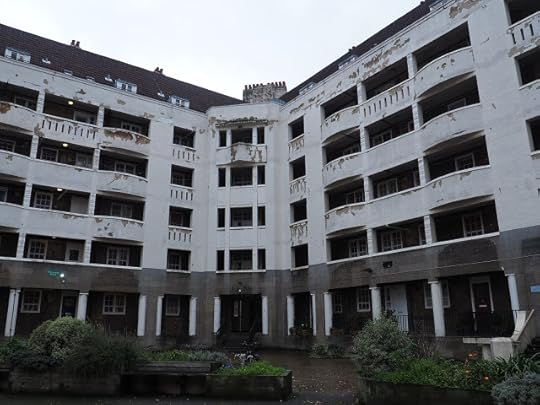
And I was reminded of Karl Marx-Hof in Vienna which is a fine building made much less grim, though no less cinematic, by being painted red.

But now I see that the part of the Ossulton Estate I walked through - Levita House - wasn’t really in ruin. It was apparently just being stripped down in preparation for a new paint job, so that it now looks like this.
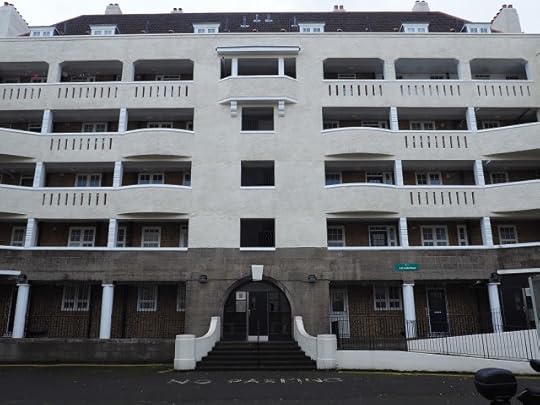
Me, I’d have painted it red.
This being the winter, it’s generally dark when I leave the British Library, and as I walk out I look up at Eduardo Paolozzi’s statue, widely known as “Newton After Blake” which looms over me, without quite making eye contact.

Of that triumverate - Paolozzi, Newton and Blake - I think only the last had much interest in walking.
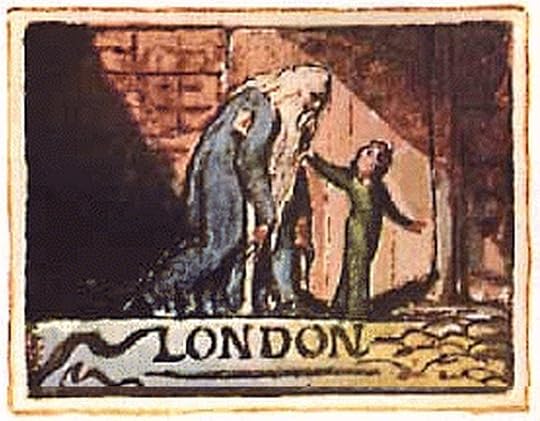


It seems that the powers that be at Euston Station want to encourage you to walk, not only to the library but to St. Pancras and King's Cross stations, and there are marked walking routes that supposedly help you to avoid the pollution of the Euston Road.

As a natural subversive this is troubling to me. Yes, I want to walk, but I don't want to be told to walk, and I certainly don’t want to be told where to walk.
So I’ve been taking short cuts through the Ossulton Estate, a collection of council flats built in the late 1920s and early 30s. When I first walked walked through, it all seemed very east European and ruined, movie-set-ish, and you know me, I like that sort of thing.


And I was reminded of Karl Marx-Hof in Vienna which is a fine building made much less grim, though no less cinematic, by being painted red.

But now I see that the part of the Ossulton Estate I walked through - Levita House - wasn’t really in ruin. It was apparently just being stripped down in preparation for a new paint job, so that it now looks like this.

Me, I’d have painted it red.
This being the winter, it’s generally dark when I leave the British Library, and as I walk out I look up at Eduardo Paolozzi’s statue, widely known as “Newton After Blake” which looms over me, without quite making eye contact.

Of that triumverate - Paolozzi, Newton and Blake - I think only the last had much interest in walking.


Published on January 15, 2019 15:23
January 13, 2019
WELL-IN, IN WELWYN
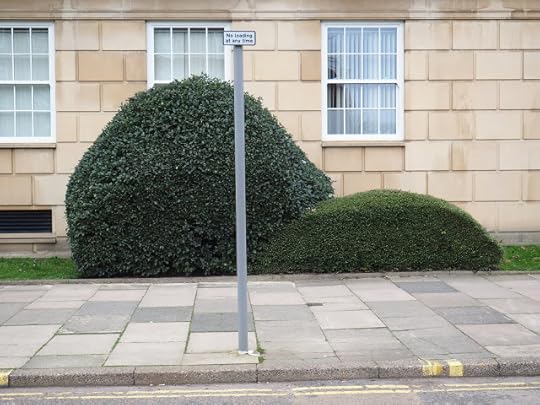
Ebenezer Howard, the father of the English garden city, was educated for a time at a boarding school in Sudbury, Suffolk. It was the kind of school that sent its pupils out walking on Saturday mornings. On once of these walks Ebenezer picked some wild flowers and carried them back at school, where he went to his room and scattered the petals around the floor.
I’ll let Ebenezer take it from here, “This being discovered I was ordered to meet my teacher down stairs. The younger one, Miss Emma Foster, set about me pretty severely with a cane, and presently said to her sister, 'Do you think I have given him enough?' Her reply was, 'No, I think he should have some more.' Shortly afterwards I went to my room in order to discover the localities of my various wounds which were not very severe.” He was about eight years old at the time, as far as I can tell.
Now, I can’t speak for conditions in Sudbury in the mid 19th century but if any eight year old lad at my school. some hundred years later, had picked flowers while walking, much less strewed the petals around when he got back, he’d have received various wounds from his fellow pupils long before any teacher could get to him. It was a different age.

I went for a walk in Welwyn Garden City last weekend, Ebenezer Howard’s second attempt at a garden suburb, much less ambitious and impressive than Letchworth. I did see the occasional flower in wintery bloom, but I didn’t pick any. I was more tempted by these mushrooms but I didn't pick them either, since my mycological identification still isn’t up to snuff.

I went to see the house Howard had lived – 5 Guessens Road, it's the one on the left and yep, it’s a semi:
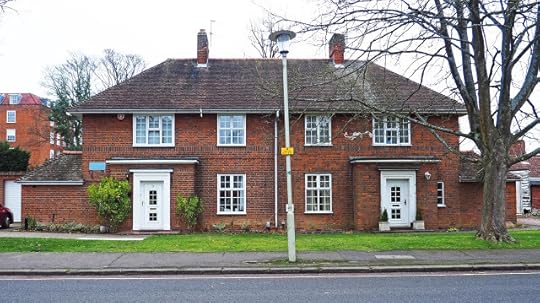
And nearby was a house that one of city’s architects – Louis de Soissons - built for himself, detached, and somewhat grander than Howard’s, though still comparatively modest given the kind of houses architects tend to build for themselves.
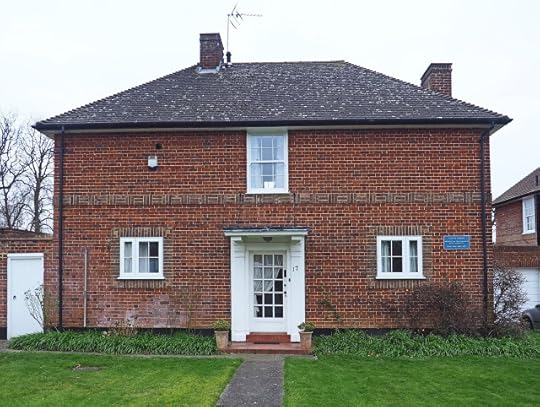
Perhaps it was crass of me to see something phallic in the arrangement of the city’s central streets:
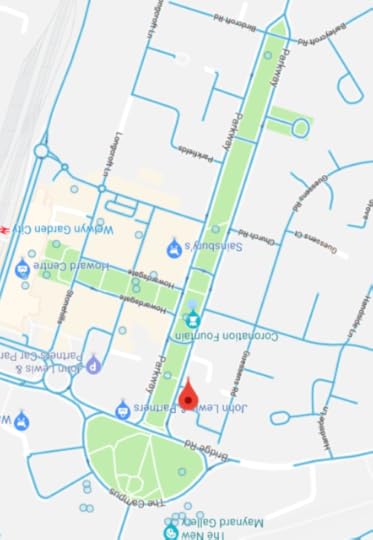
But there was also a certain amount of public nude statuary here and there. This one is titled “Ad Astra” and yes, it was a cold day:
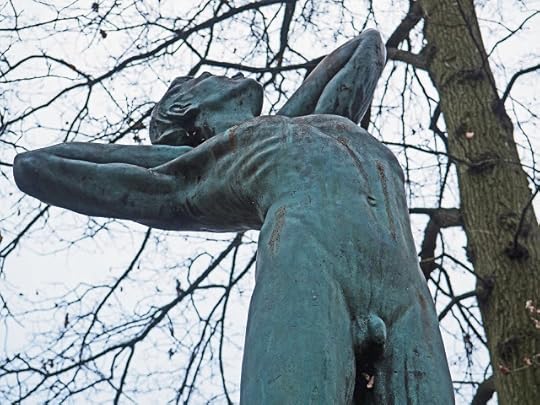
This one is “Dawn,” a fleshier specimen:
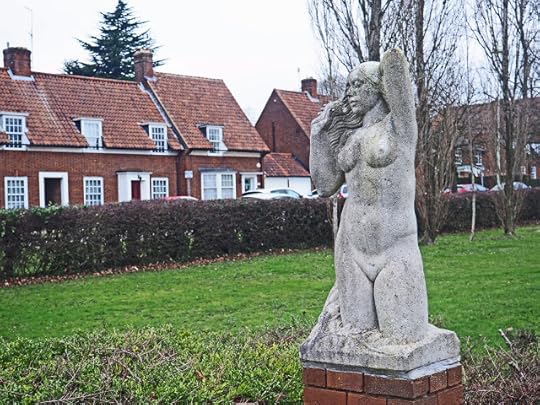
The best thing that happened in Welwyn Garden City was this: I was walking around, mooching you’d probably say, looking at things, occasionally taking pictures, and I spotted a house that was having its roof worked on, but the existing tiles were being replaced with new tiles that were of a wildly unmatching colour.
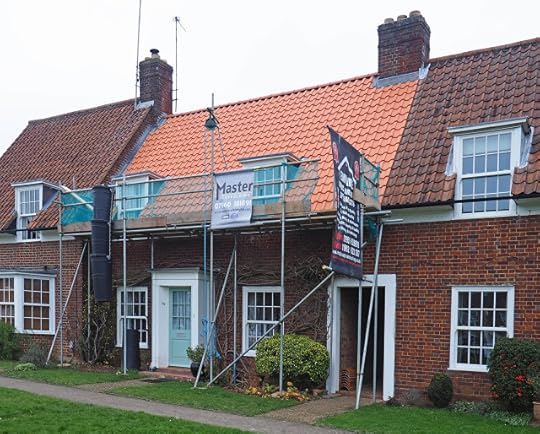
Knowing that most conservation areas are beset with rules and regulations about the most minor changes people can do to their houses, this seemed surprising and well worth a photograph or two.
And as I was taking a picture, the front door of the house next door opened and a neighbour came running out – a formidable, chunky middle-aged woman, obviously somebody not to be trifled with, although I did intend to stand my ground if, as I expected, she started telling me I wasn’t allowed to take pictures. But that wasn’t what she had in mind at all.
She said, “I saw you taking a picture of that roof. Isn’t it awful? It’s completely the wrong colour. Even when they were starting I kept saying those tiles are all wrong but they just carried on, and they said they’d blend in once they’d weathered. But I knew that couldn’t be right, And anyway finally the builder admitted that he’d ordered the wrong colour tiles and now he's going to have to take them all down and start again with the right coloured tiles. And in the meantime it just looks absolutely dreadful.”
The suburbanite in me stirred. I agreed with her completely.

Published on January 13, 2019 10:45
January 7, 2019
EMPIRE OF THE STUNNED
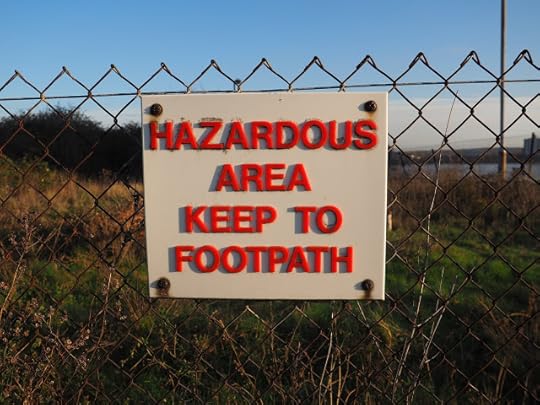
Between Christmas and the New Year I went with Foster Spragge on the final walk of her As the Crow Flies project. Mat Clum of Tickbird&Rhino was there too. He’s the one on the left in the picture below (taken by Foster).

By the time you read this, an exhibition of drawings done during these walks (along with others), will be on display at the Westminster Reference Library, 35 St Martin's St, London, WC2H 7HP. Hurry along, why don't you?

I joined Mat and Foster in Hackney Wick (above) – they’d started further upstream, and we walked to Woolwich, like this:
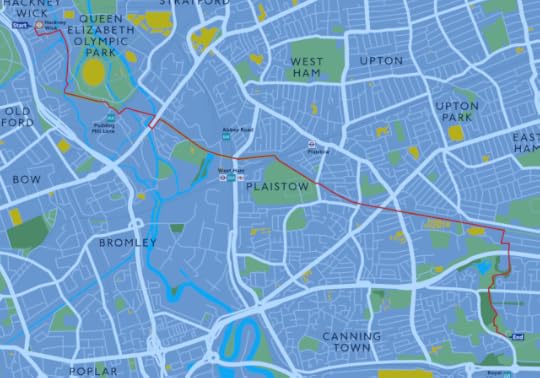
And then this:

We were more or less following the Capital Ring, though for one reason and another we strayed from that route occasionally. For most of the time I really didn’t know where I was, which was great, since usually when I walk I’m the one holding the map, plotting the route, making the decisions.
But I do know that at one point we walked along the Greenway - Plaistow, East Ham sort of way, which is built on the embankment of a sewer.
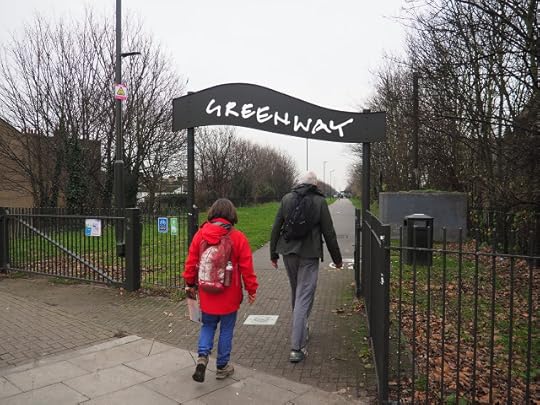
Frankly, it was a bit bleak up there, and seeing and this sign didn’t add to our sense of well-being.
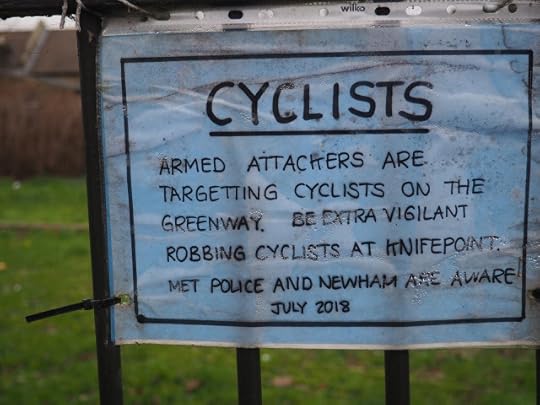
I mean, we weren't cyclists, so were presumably not being "targeted" but that still left a lot of possibilities.
There was a great deal of flotsam and jetsam strewn around atop the sewer embankment, and the most intriguing by far was this safe.

There must be a good story about where it came from, who carried it up there, how they got it open and what they found inside, but not all stories reveal themselves entirely.
And towards the end of the walk, things all turned a bit JG Ballard – high rises, low flying aircraft (from City Airport), even a kind of terminal beach, which is by no means the worst way for a walk to turn.


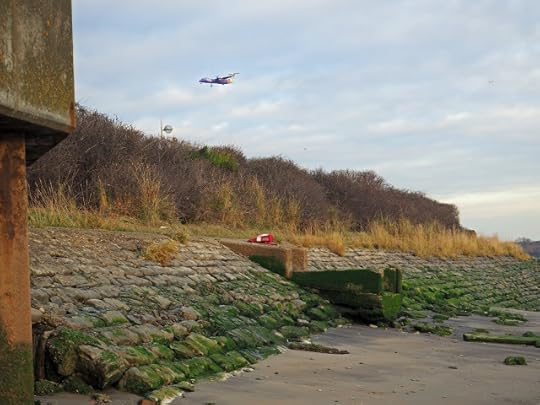
Actually there are days when any walk can turn Ballardian, and it happened to me again just the other day walking in a Battersea Park.
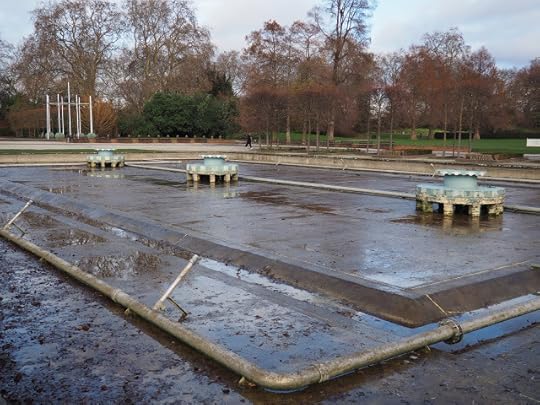
And likewise here when I was walking in Chicago not so long back.
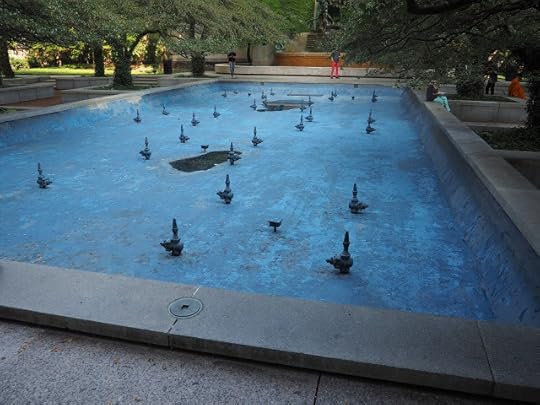
Do all drained pools invoke Ballard? I suppose for many of us at this point in history, they do. I wonder what or who they invoked before he wrote about them?
Some details of the exhibition are here:
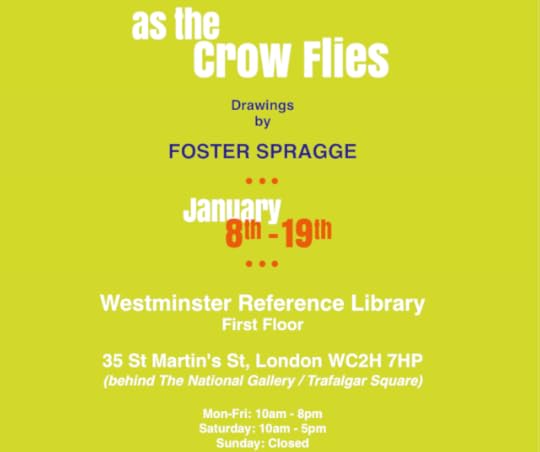

Published on January 07, 2019 10:50
December 26, 2018
IT'S THE THOUGHT THAT COUNTS
The traditional Boxing Day walk; this year in the mean streets of Chelsea. No great surprise to find a Christmas tree thrown out the day after Christmas.
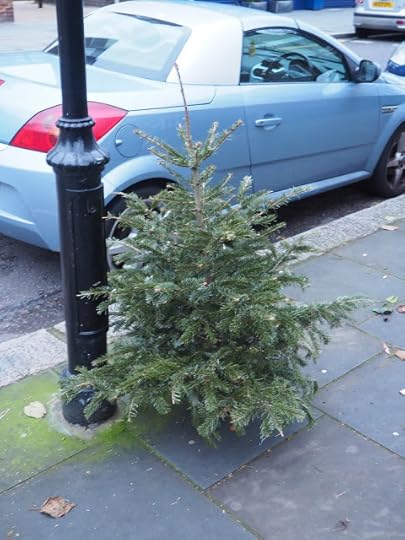
But more surprising to find this; a heap of Christmas trees that, I assume, had remained unsold, never made it into anybody’s home, and so the Christmas tree dealer had dumped them in a pile on the pavement.

And I can’t decide if this was a kind of altruism, that he’d left the trees there so that the poor and needy could pick one up for free, or whether it was just an advanced form of littering and dumping, and the dealer just couldn’t be arsed to take them away with him. Maybe he had mixed feelings. Many do at Christmas.


But more surprising to find this; a heap of Christmas trees that, I assume, had remained unsold, never made it into anybody’s home, and so the Christmas tree dealer had dumped them in a pile on the pavement.

And I can’t decide if this was a kind of altruism, that he’d left the trees there so that the poor and needy could pick one up for free, or whether it was just an advanced form of littering and dumping, and the dealer just couldn’t be arsed to take them away with him. Maybe he had mixed feelings. Many do at Christmas.

Published on December 26, 2018 09:32
AN AESTHETIC WALK
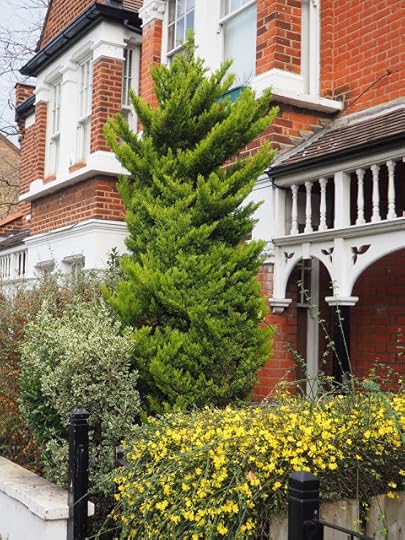
I went for a walk in Bedford Park, in West London. As you may have guessed, I’m doing some suburban exploration.
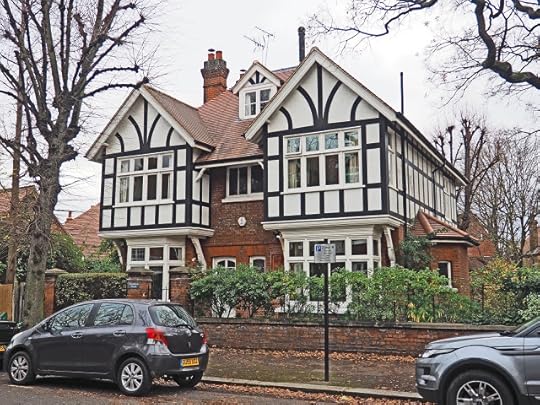
Bedford Park has a good claim to be the first garden suburb. Work began there in 1875, long before Letchworth Garden City or Hampstead Garden Suburb. And whereas Letchworth Garden City was built by a visionary, and whereas Hampstead Garden Suburb was built by a social reformer, Bedford Park was built by a slightly dodgy property developer, Jonathan Carr.
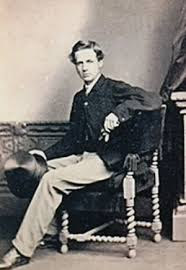
He bought 24 acres of land from his father in law, a ripe plot just north of Turnham Green tube station. He commissioned EW Godwin and then Norman Shaw to design houses for the suburb, and in the end built 365 houses. He also had the advantage of having a brother, J. Comyns Carr, who ran the Grosvenor Gallery and was connected with members of the Aesthetic Movement. He recommended the place to influential and artistic friends, and Bedford Park became something of a Bohemian enclave. WB Yeats lived there with his father and brother, and it was fashionable enough to have a satirical (and fairly lame) poem written about it, The Ballad of Bedford Park. One verse runs:Now he who loves aesthetic cheer
And does not mind the damp
May come and read Rosetti here
By a Japanese-y lamp.
On the map, Bedford Park is now small, triangular, a sort of Christmas tree shape, with The Avenue running up through it like a trunk, and roads off to the sides like branches, though it didn't start out like that.
A current map shows you the boundaries of the place but these aren’t all that obvious on the ground. The roads have “good old” English names, Blenheim, Marlborough, Vanbrugh, Fielding, Flanders.
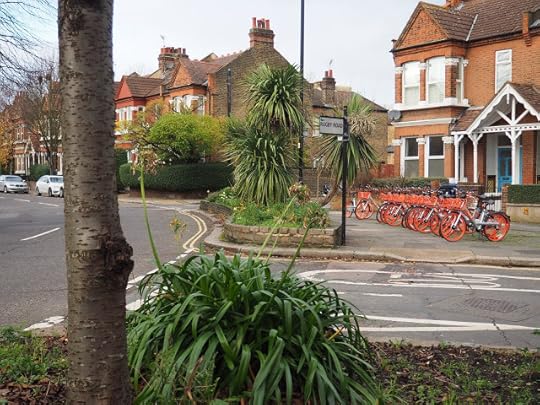
Unlike Hampstead Garden Suburb this did feel like London. Some parts of it were very fancy, some not really that fancy at all, but clearly all of it pretty expensive. And unlike Hampstead Garden suburb it has a pub, The Tabard, a pub – designed by Norma Shaw with William de Morgan tiles in the interior. There was also a Polish shop and a Buddhist Vihara on the Avenue.
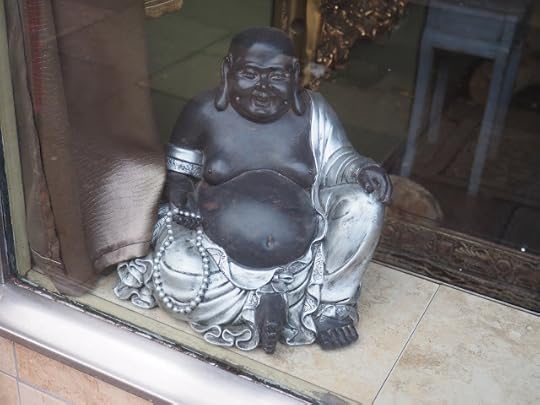
I was walking without any great purpose and it was easy to get lost, but it was hard to staylost. Just by wandering you can find yourself back where you started. I occasionally I used some interesting old cars parked in the streets as markers, since the cars were rather more distinctive than many of the houses.
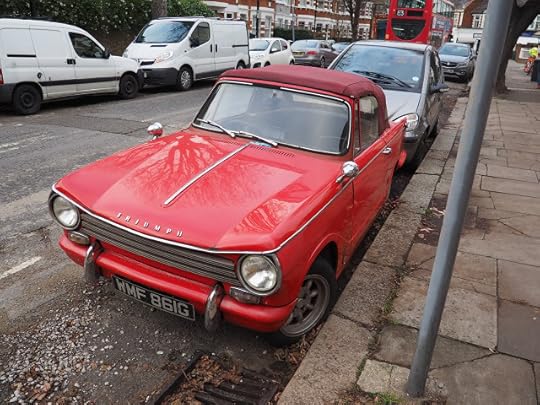
Having said that, I was fascinated by the odd combination in the architecture of diversity and similarity. The original architects had done a certain amount to make the houses look individual and then the inhabitants had taken it further. These two porches for instance which had surely started out looking identical.
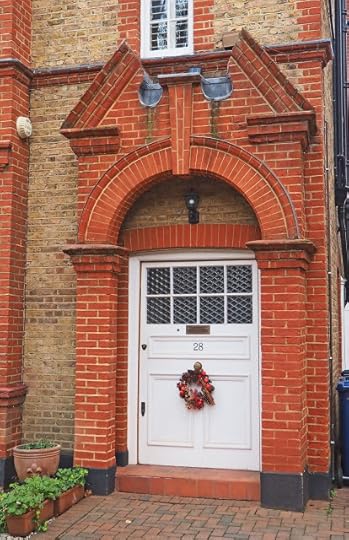
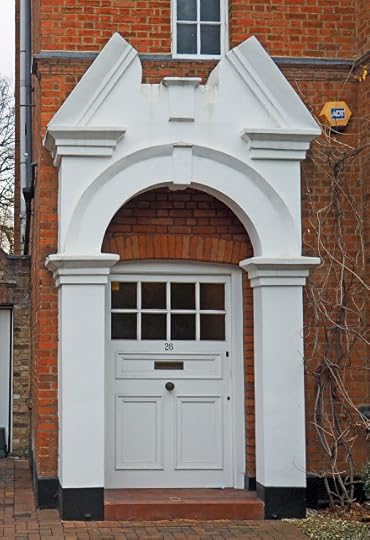
And this succession of gables, no two of them quite the same; some quite plain, some looking like the insignia of a secret organization.
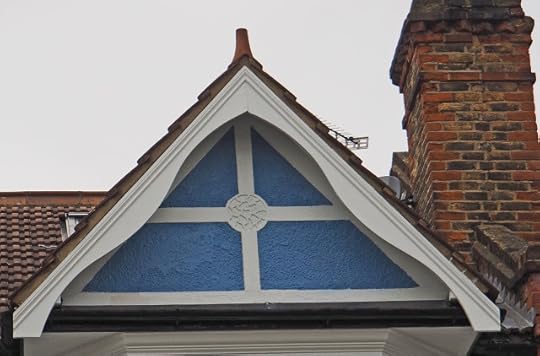
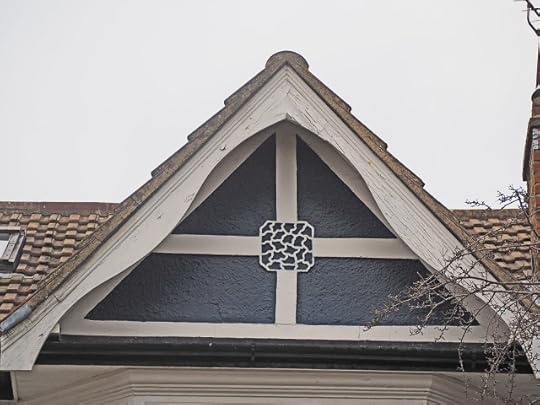

Bedford Park is now a conservation area which means there are strict rules about what you can do to your house, and about what you can do to your trees. Under Section 211 of the Town and Country Planning Act 1990 “all trees in the conservation area are protected by law. It is an offence to deliberately damage or destroy a tree by cutting down, topping, lopping, uprooting or by any other means without permission from the local planning authority. … Six weeks’ notice must be given before any work is started.”
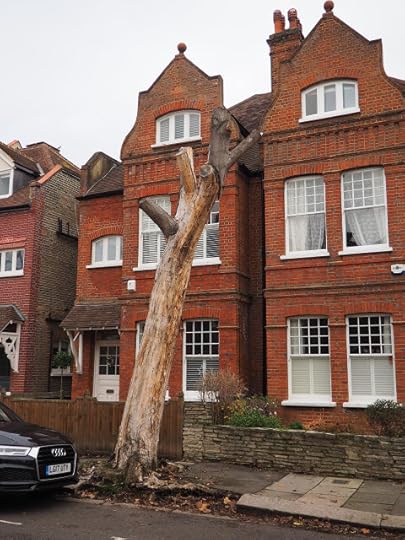
On the other hand I did see some dead trees, and some huge pieces of tree trunk, which were possibly located just outside the conservation area.
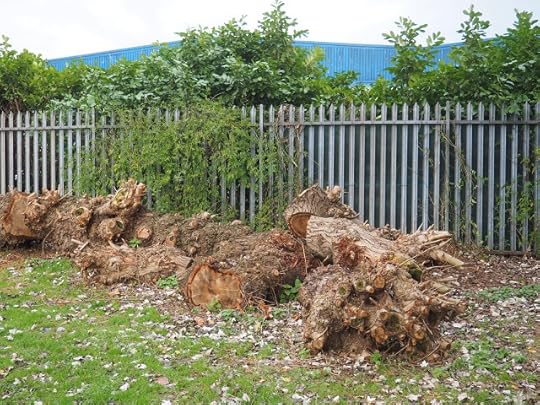
As for new buildings, well some of the houses are replicas in the Arts and Craft style, which replaced old ones that didn’t suit the tone of the place, but some of the most interesting buildings were a couple of zesty new houses that had been shoehorned in and looked different from the prevailing style and yet to my urban eye didn’t look at all out of place.
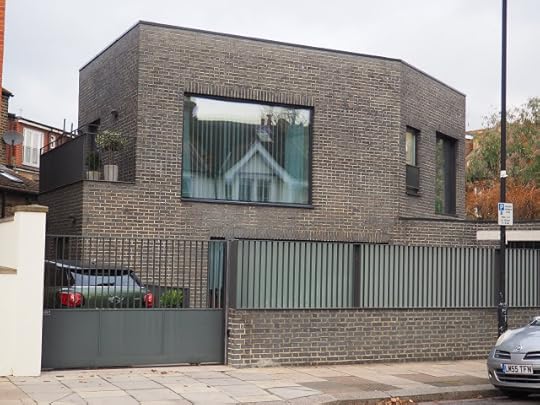
Yes there were gardens, and they were well looked after, nothing very eccentric, nothing kitsch that I could see, but there were some interesting plantings including this, which is one of the biggest olive trees I ever saw in captivity in England:
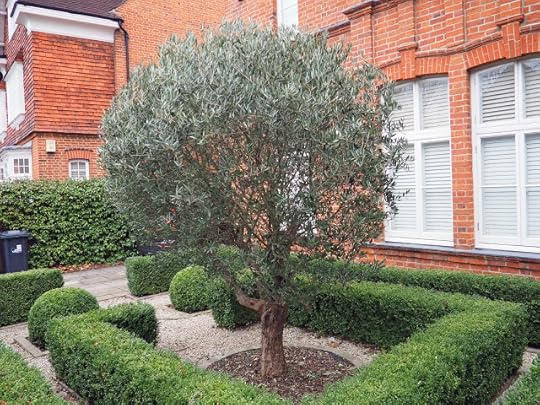
Also this tasteful cat statue:

And at one point I became aware of a real cat walking very close to my feet. It’s a measure of a certain kind of suburb that you see cats wandering freely, even if a few of them have missing ears or shortened tails. Now, I like cats well enough but I don’t like cute cats and there was nothing cute about this one. He didn’t just look like the cat belonging to the evil genius – he looks like an evil genius in his own right.

Suburbia is a great place for an evil genius to go into hiding.

Published on December 26, 2018 04:38
December 19, 2018
WORM WALKING
When exactly did people start talking about “ear worms” as opposed to saying they had a song “stuck in their head.” Apparently ear worm first appeared in print in a 1978 novel by Desmond Bagley titled Flyaway, but I think it took a very long time to trickle down to general usage. Maybe it’s got something to do with the increasing use of ear buds.

I still prefer to say that music’s “stuck in my head” because that’s where it is, in the brain; the ears don’t necessarily come into it. And lately while walking I’ve been stuck on the song “Stripsearch” by Faith No More, and I think it has something to do with the fact that when I sing the song in my head I also see the video in which Mike Patton walks through parts of Berlin.

It’s difficult to commemorate musicians and composers. A statue doesn’t really convey anything musical, though there are a couple close to where I’m currently living.
There’s Bela Bartok in South Kensington
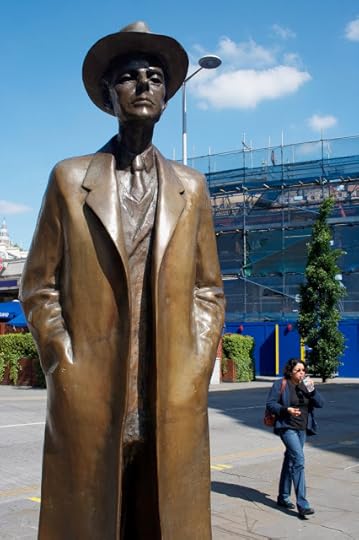
And Vaughan Williams in Chelsea Embankment Gardens. You can see the whites of his eyes!
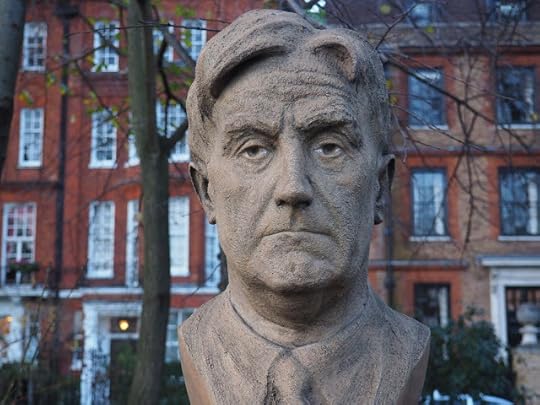
But has there ever been a better musical tribute than this one? The Nicky Hopkins memorial bench, seen while walking in Perivale.
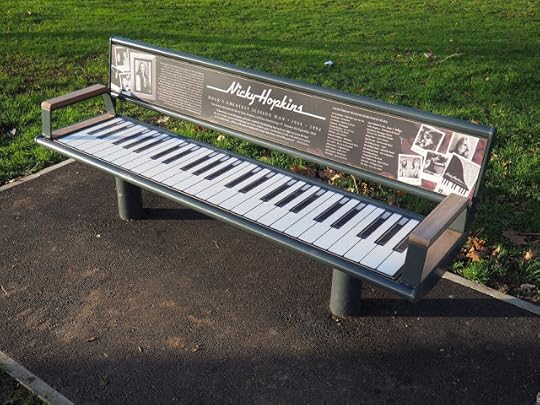
I had a vague hope that the keys on the bench were somehow “real” and you could sit down and music would start to play. Sometimes I want too much.
And I still haven't stopped "hearing" Stripsearch. The video is here:


I still prefer to say that music’s “stuck in my head” because that’s where it is, in the brain; the ears don’t necessarily come into it. And lately while walking I’ve been stuck on the song “Stripsearch” by Faith No More, and I think it has something to do with the fact that when I sing the song in my head I also see the video in which Mike Patton walks through parts of Berlin.

It’s difficult to commemorate musicians and composers. A statue doesn’t really convey anything musical, though there are a couple close to where I’m currently living.
There’s Bela Bartok in South Kensington

And Vaughan Williams in Chelsea Embankment Gardens. You can see the whites of his eyes!

But has there ever been a better musical tribute than this one? The Nicky Hopkins memorial bench, seen while walking in Perivale.

I had a vague hope that the keys on the bench were somehow “real” and you could sit down and music would start to play. Sometimes I want too much.
And I still haven't stopped "hearing" Stripsearch. The video is here:

Published on December 19, 2018 10:43
December 16, 2018
WHEN YOU WALK IN THE GARDEN ...
I went for a walk in Hampstead Garden Suburb. I was going to say “somebody has to” but I’m not sure that anybody really does.
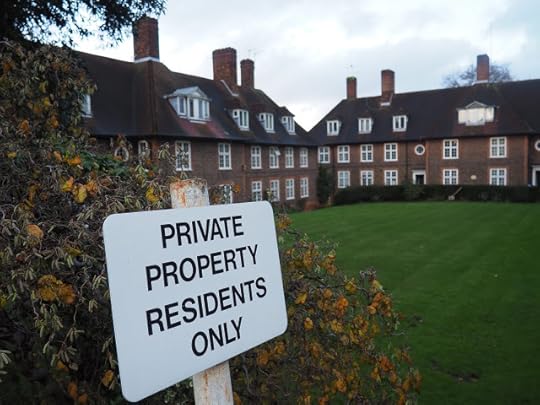
Hampstead Garden Suburb was the product of Henrietta Barnett. She’s generally described as a social reformer, originally in Whietchapel where her husband was vicar of St Jude’s, and where there was a lot to be reformed. She was the author of Practicable Socialism (1889) and Toward Social Reform (1909). By the time that second book was published she’d founded the Hampstead Garden Suburb Trust and would have been well aware of Ebenezer Howard, and developments in Letchworth Garden City. Building work started in 1907.
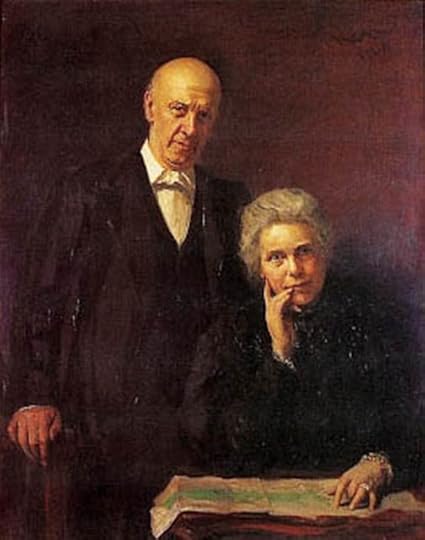
She employed Howard’s planners and architects, plus Sir Edwin Lutyens, who brought a lot of star power with him. Walking around the Suburb these days, I couldn’t swear which houses were real Lutyens and which were merely “in the style” of Lutyens. No doubt others can.
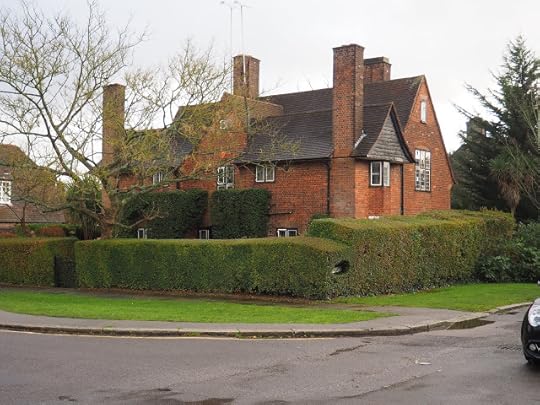
My friend Joanna Moriarty who grew up in the Suburb, told me the word on the street was that if you bought a Lutyens house you bought yourself a whole load of trouble. His sweeping tile roofs were considered to be a serious liability.Joanna also had a story that somebody from the Hampstead Garden Suburb Trust, came knocking on the family’s front door one weekend afternoon and said to her father, “Your neighbor is laying crazy paving. What are you going to do about it?” Crazy paving, I assume, was a horror to the sensibilities of the Hampstead Garden Suburb crowd. Joanna’s dad, being a civil servant of the old school said, “I’m going to continue to mind my own business.” That, of course, is what most people in the suburbs say they want – to be left in peace - but of course neighbours can get out of hand, and so various local rules are imposed to keep them in line. The Trust website says ominously, “It is a criminal offence to undertake unauthorised works to trees on the Suburb (pruning or felling).”
The Suburb was built with no pubs, no shops no cafes, no cinemas – a situation that endures - though the supermarket in Finchley Road has a sign on the front that reads, “Welcome to Hampstead Garden Suburb’s Co-op.” You will note the very shiny car coming in from the left.
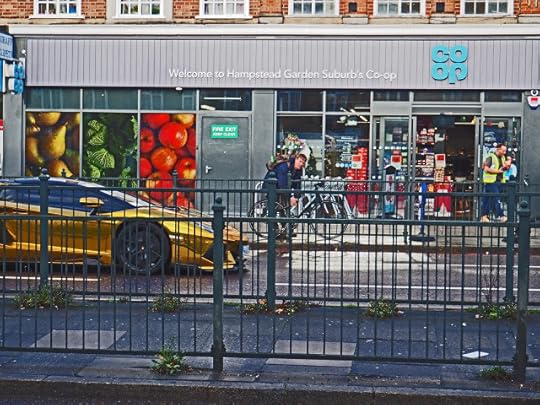
The whole area felt moneyed, posh, controlled, and there were some very fancy cars in the driveways. I found it fascinating and by no means objectionable or oppressive, but it didn’t feel at all like London: which may have been the whole point for the people who live there.
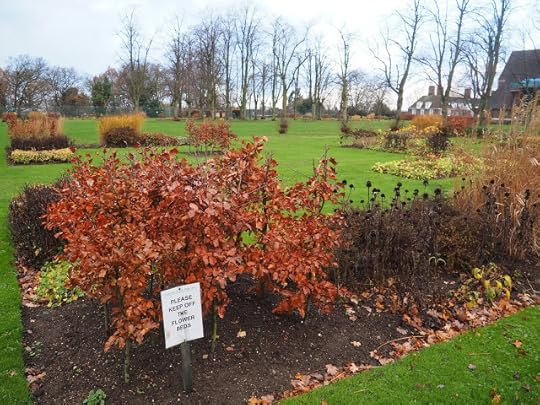
And as I walked around I noted that, unlike in Letchworth Garden City, the inhabitants here were determined to live up to the “garden” part of the name. A lot of energy had gone into the landscaping and planting, and some of the front gardens were wonderful and extraordinary.
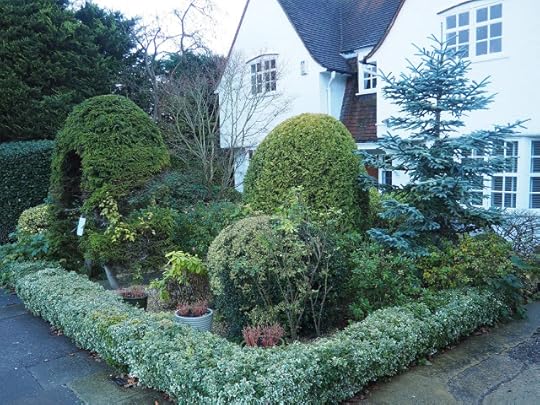
No doubt some professional help had been employed here and there, as evidences by this van belonging to Urb’s Gardens – I couldn’t tell how many layers of irony Urb had in mind.
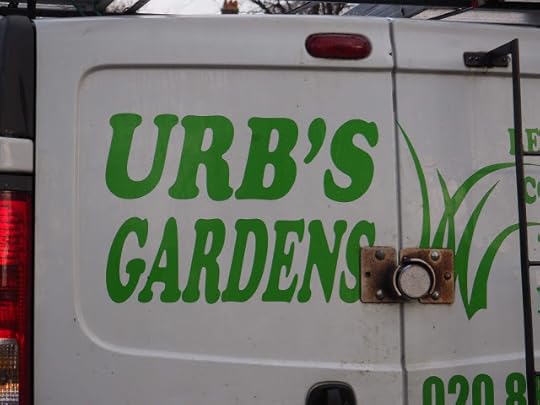
And at some point it struck me, and it took me longer than it probably should have, that there were no garden walls here between the houses, or between there houses and the roads. There were no bricks, no concrete, only hedges, and some people had really gone to town turning them into arches, finishing them off with bits of topiary, although one or two did look a bit the worse for wear.
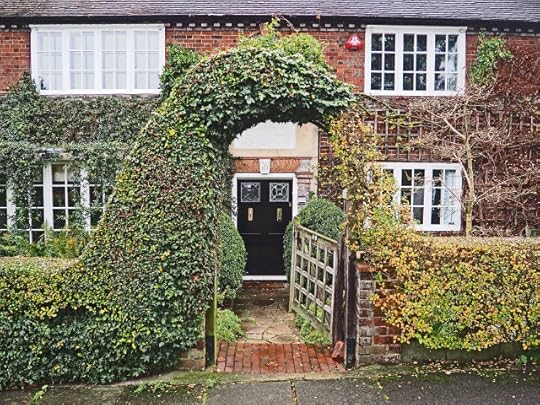
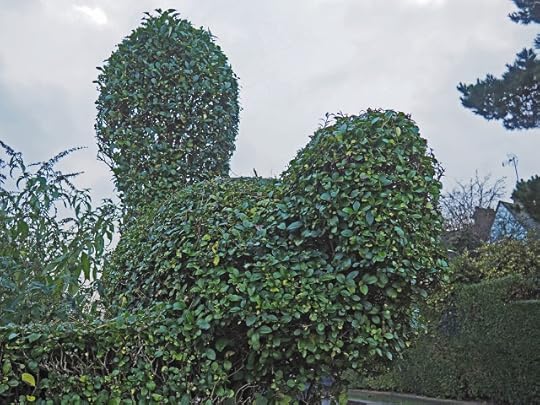
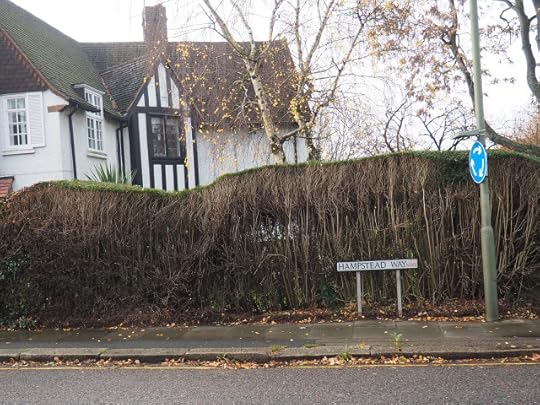
However, and it’s a biggish however, the south eastern boundary of the Suburb abuts the Hampstead Heath extension and between them is a structure know as the Great Wall, which some sources will tell you is reminiscent of a medieval town. You can no doubt pick quite a few metaphors out of that, but the one that struck me was that sometimes a hedge apparent that sometimes a hedge just isn’t enough of a barrier between you and the rest of the world.
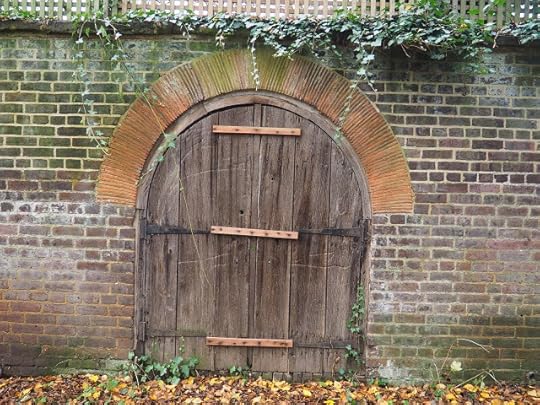

Published on December 16, 2018 11:56
December 10, 2018
QUEENLY WALKING
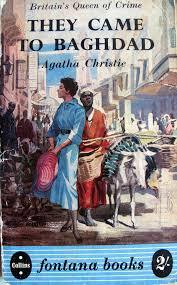
I don’t have any hard and fast “rules” for walking but I do have some habits. And one of them is that if I’m walking and I come across a book that’s been left in the street, I pick it up and read at least some of it, and it’s amazing how often this discarded and randomly picked up books seem to have something relevant to say.
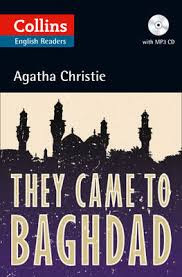
Last week I found a copy of Agatha Christie’s They Came to Baghdad, first published in 1952. It wasn’t any old edition but the Collins English Readers Edition that you see above - “these carefully adapted versions are shorter than the original with the language graded for upper-immediate learners,” which reduces the length to 100 pages, for which I am grateful, and I have read now every one of those pages.
Is there walking in They Came To Baghdad? You bet. The plot, I think it’s fair to say, makes no sense whatsoever, but it involves archeology, world domination and a plucky heroine named Victoria who meets some bloke on a park bench in London and decides she has to follow him to Baghdad. And yes, believe it or not, complications ensue. Hair dying is also involved.
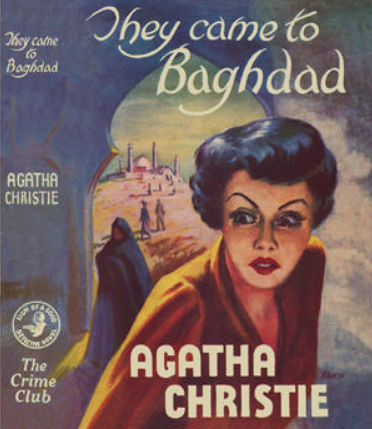

On the way to Baghdad, Victoria stops in Cairo, “She decided to go for a walk. Walking, at least, needed no money.” True that.

And when she gets to Baghdad there’s a somewhat detailed account of a walk she does there, “Baghdad was completely different from her idea of it – people shouting and a main road filled with cars, sounding their horns angrily … Most people wore poor quality Western clothes, bits of old army uniforms; and there were a few figures with long black clothes, their faces covered, who went almost unnoticed … The road was in poor condition with the occasional large hole.”
Agatha Christie was married to an archeologist, Max Mallowan, so she must have known something of what she was writing about, but even so the novel contains what strikes me as one of the strangest sentences I have ever read, “Richard jumped down into the long hole and the two archeologists enjoyed themselves in a highly technical manner for a quarter of an hour.” Perhaps it was a more innocent age.
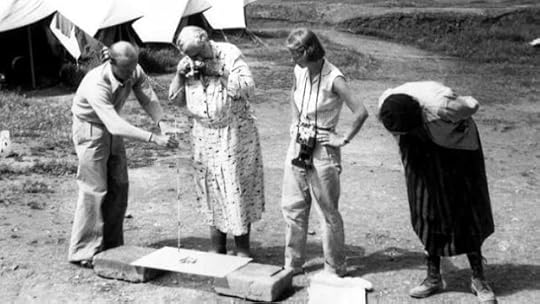
Above, I believe, is Agatha Christie at the Nimrud Dig in Syria the 1950s; that was the place where Mallowan made his reputation.
The whole city was destroyed by Isis in 2015 on the grounds that the ancient artefacts there were blasphemous. UNESCO declared the distruction to be a war crime. I look forward to the trial.

Published on December 10, 2018 10:07
December 7, 2018
LEANINGS
I know it’s probably bad and wrong of me to be walking down the street, see this, and be royally amused.

Of course if this had been in a sitcom, the whole row of bikes would have fallen over like dominos, and I suppose there’s something about the stands holding the bikes that prevents that.
In general I don’t want my life to be more like a sitcom. But in this case I’m not so sure.

Of course if this had been in a sitcom, the whole row of bikes would have fallen over like dominos, and I suppose there’s something about the stands holding the bikes that prevents that.
In general I don’t want my life to be more like a sitcom. But in this case I’m not so sure.

Published on December 07, 2018 13:05
December 1, 2018
THE HANGING GARDENS OF LETCHWORTH
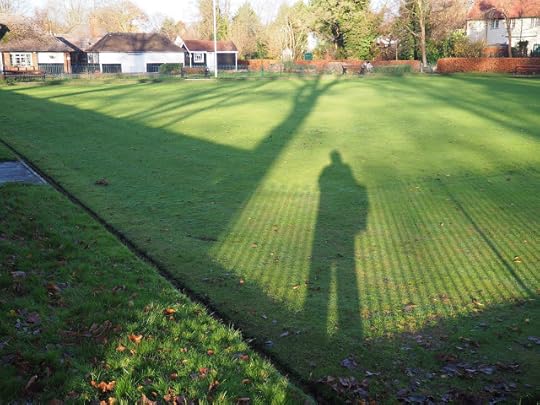
I went for a walk in Letchworth Garden City – I had my reasons. When you get off the train there’s a sign in the station reminding you, if you need reminding, that you’re in the world’s first garden city, though I’d have thought Babylon with its hanging gardens might have been in with a shout.

And if you walk down to the southeastern end of things there’s another signpost hammering home the message. This is the front:
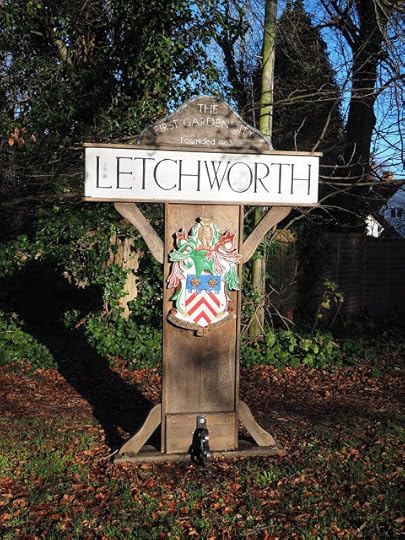
And this is the back:
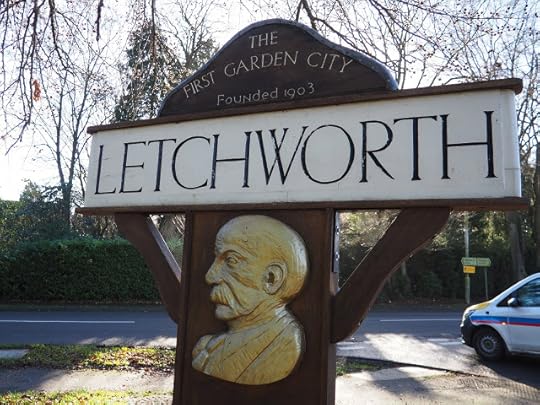
That’s a low relief image of Ebenezer Howard (and not a great likeness, if you ask me), the founder of Letchworth Garden City, and of the garden cities movement in general.
Now, Howard’s notion of a “garden city” was not as we might imagine it today. Like so many other people before and since he was worried about urbanization, about people leaving the land and moving to big cities, especially in this case London.
So he conceived of a much smaller city, adjacent to fields, where people would work the land and then go back to their pleasant, nearby, arts and crafts style homes; which of course did have gardens.
It’s not clear to me how many, if any, agricultural labourers actually moved into Letchworth; the received wisdom was that it was far more a haven for socialists, vegetarians, nudists, teetotalers; New Agers before the term was current. I’m not sure how many of those are now in Letchworth either.

This picture above taken in 1912 suggests it wasn’t entirely a rural idyll – and those front gardens look extremely perfunctory. The picture below looks far more as though the inhabitants might, at least, be trying to feed themselves from their own gardens.
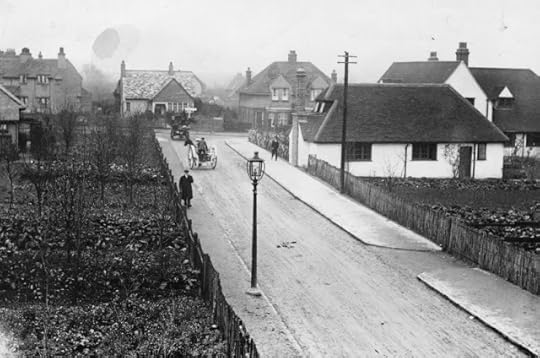
I set myself the task of walking around Letchworth looking at gardens. I was, for sure, in search of individuality, eccentricity and, OK, a certain kitschness, but all of that was surprisingly hard to find. And yes it was end of November, when few English gardens look their best, even so I really had to search hard to find much of anything out of the ordinary. But I didn’t fail completely

There were some curious plantings:

Some curious topiary, if that’s the right word in this case:
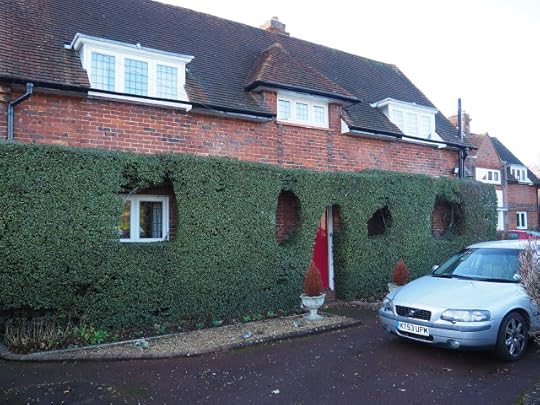
A decaying chair in the shape of a hand:
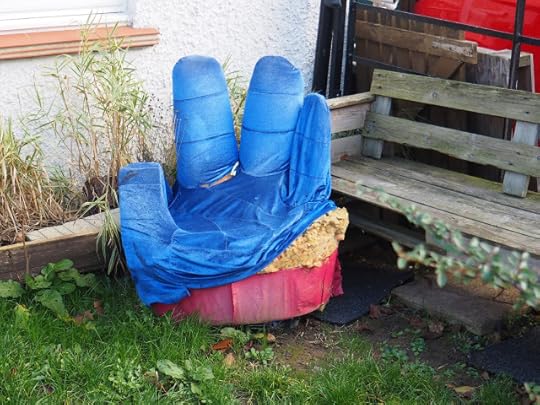
And yes, one garden that looked like the householder might be aiming for self-sufficiency:

But the majority were tidy and unexciting – nobody seemed to be expressing themselves through their gardens. And I wondered if this was a class thing. Perhaps the upper and lower classes do indeed express themselves through their gardens, either on a large scale or a small, but the middle classes just keep them neat and tidy, and above all they keep them to themselves. They don’t want passersby (like me) to know their tastes and their business. And of course, I was mostly looking at front gardens. It was possible perhaps that there were untold follies and grottos, and for all know hanging gardens, in the back , but somehow I doubted it.
Naturally enough there are public gardens in Letchworth. There are the Broadway Gardens, a name they got at the time of the Letchworth centenary. For while before that were the John F Kennedy Gardens – a fact memorialized by this block of (I think) granite:
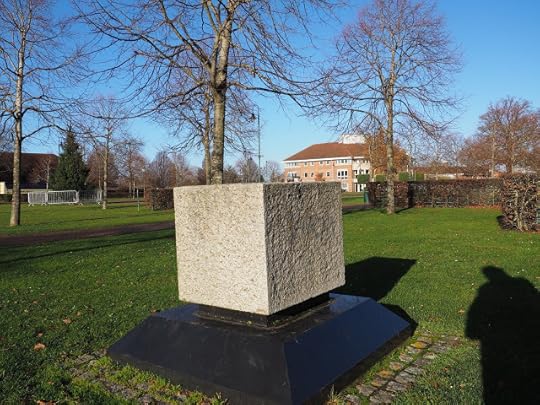
There are also Howard Park and Gardens – which contain an adventure playground, water features, a bowling green and statue of Sappho – not ever public garden has one of those. And for a good while Howard Park and Gardens didn’t have one either.
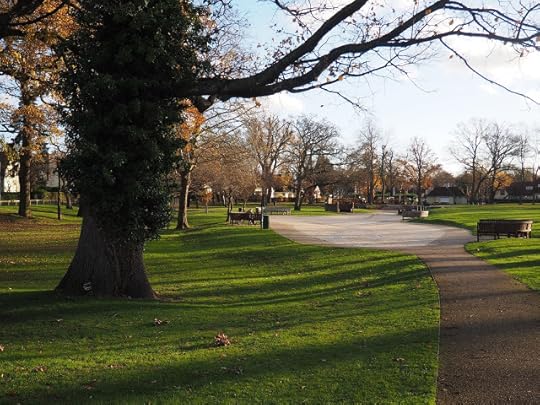
The statue was presented to the city in 1907 and moved around, ending up in 1939 in the Ball Memorial Gardens. But the statue was stolen in 1998, so what’s there now is a replica, and its been moved round the back of the International Gardens Cities Exhibition, away from prying and criminal eyes.
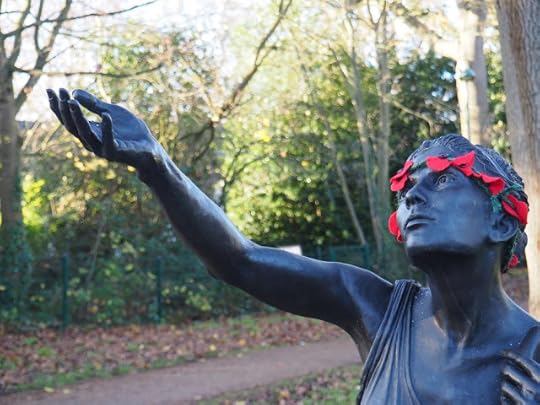 Clearly Letchworth contains elements that would have appalled Ebenezer Howard, and I can’t even imagine how he’d feel about some of the businesses on the main drag such as No Morals Tattoos.
Clearly Letchworth contains elements that would have appalled Ebenezer Howard, and I can’t even imagine how he’d feel about some of the businesses on the main drag such as No Morals Tattoos. 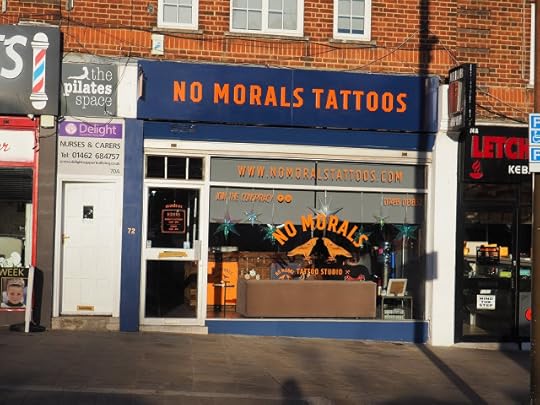
I guess this is known as reaction.

Published on December 01, 2018 09:12
Geoff Nicholson's Blog
- Geoff Nicholson's profile
- 55 followers
Geoff Nicholson isn't a Goodreads Author
(yet),
but they
do have a blog,
so here are some recent posts imported from
their feed.



